This French Press Espresso is an easy way to get thick and creamy, flavorful coffee without a machine. It’s the perfect pick-me-up drink for your busy mornings and afternoons.
Coupled with a little Blueberry Coffee Cake, you’re on your way to a great start to your day. You can’t buy happiness, but you can buy a French press and coffee beans. That’s kind of the same thing. ;)
What is espresso?
Espresso is a concentrated shot of strong coffee. By forcing pressurized water through finely-ground coffee beans, you get a thicker, creamier and more concentrated coffee.
The coffee beans used in the fancy machines at coffee shops are ground fine and firmly packed to make a perfect shot of espresso. If you don’t have an espresso machine at home, the French press is a good option for making your own espresso.
Espresso shots are then used in a variety of drinks like cappuccino, Americano, and even cocktails like this Espresso Martini with Baileys or Mojito Espresso.
Since we are using the French Press, note that the process is a little different in that we are not pressurizing the coffee in a machine. So it’s not technically espresso, but espresso-like coffee.
The results will be similar in taste and thickness as long as you get the measurements right.
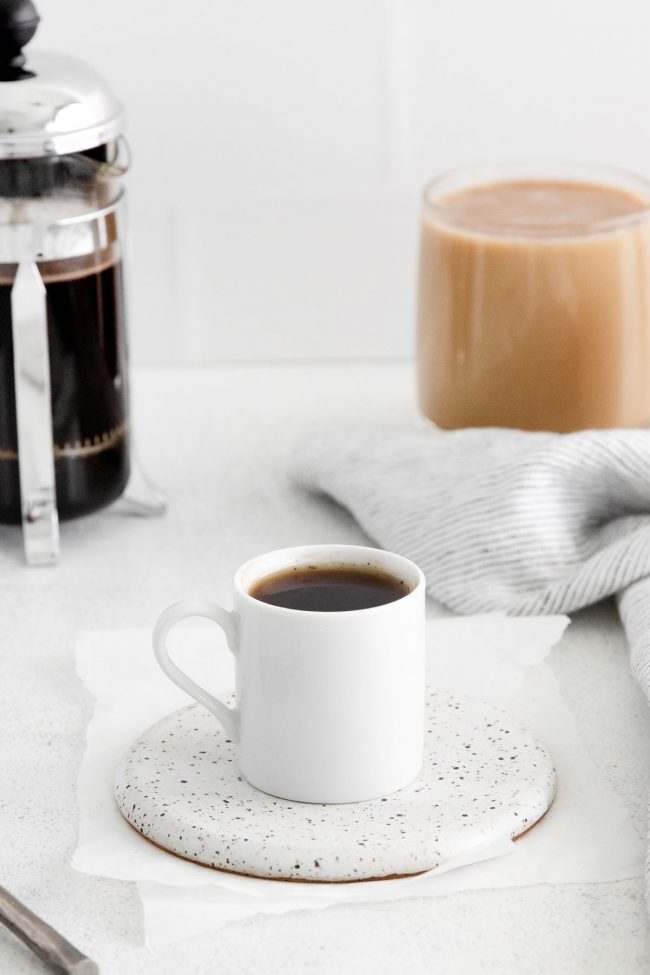
What is a French press?
A French press is coffee brewing device that is easy to use, eco-friendly, and portable.
It has a glass cylinder with a particular lid that consists of a mesh piston and a coffee plunger that acts as a filter.
It was originally made to filter tomato skins when making tomato juice. It has other functions like frothing milk as well.
The plunging maximizes the extraction of the oil and flavonoids from the ground coffee and filters out the grounds when you’re ready to pour.
Ingredients + equipment
Well, this is easy! You just need:
- A French press
- Coffee beans (more on the type + grind below)
- Water (and I even write about water below)
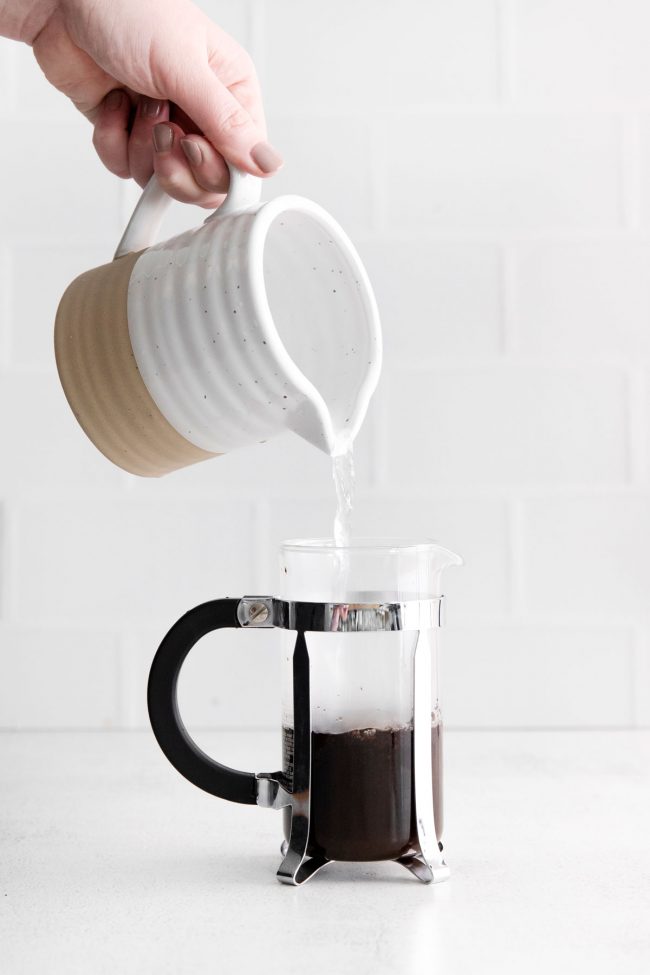
How to make espresso with a French press
- Bring the water to a boil, and then let it cool for a minute. If you have an electric kettle and you’re able to set the target temperature, then even better. Set it to 195 °F (91 °C).
Some sources say to make sure the water boils. Some sites specifically say not to let the water boil and to stop it just before it starts boiling.
I’ve made it both ways and don’t notice any difference in the result. Just bringing the water to a boil and then letting it cool for a minute works just as well as bringing the water to the correct temperature with an electric kettle and then using it immediately.
Water boils at 212 °F (100 °C), so with the temperatures in the recipe, you’re close to boiling but not quite there.
At the same time, should you choose to do so, you can preheat your French press (there’s more on that below). - Add the ground coffee beans to the bottom of the French press.
- Pouring in a circular motion, cover the grounds with a little water. If you want to be exact, you’re supposed to add double the weight of coffee in water. Since we’re using 39 grams of coffee, you’d want to pour over 78 grams of water. That’s about 5 tablespoons. Do not stir.
- Wait 30 seconds to allow the ground coffee to bloom. That helps release their aromas and oils. I don’t recommend skipping this step as the espresso will be less rich.
- Add the remaining water and do not stir.
- Place the plunger on, but do not push it down yet.
- Let it steep for 2-4 minutes. Two minutes is good for light roast (which typically isn’t used in espresso, but some people like it) and four is good for dark roast (which is likely what you’re using).
- Slowly press down the plunger – but not all the way down – just until you meet resistance from the coffee grounds. You want to avoid disturbing the coffee grounds.
- Pour and enjoy!
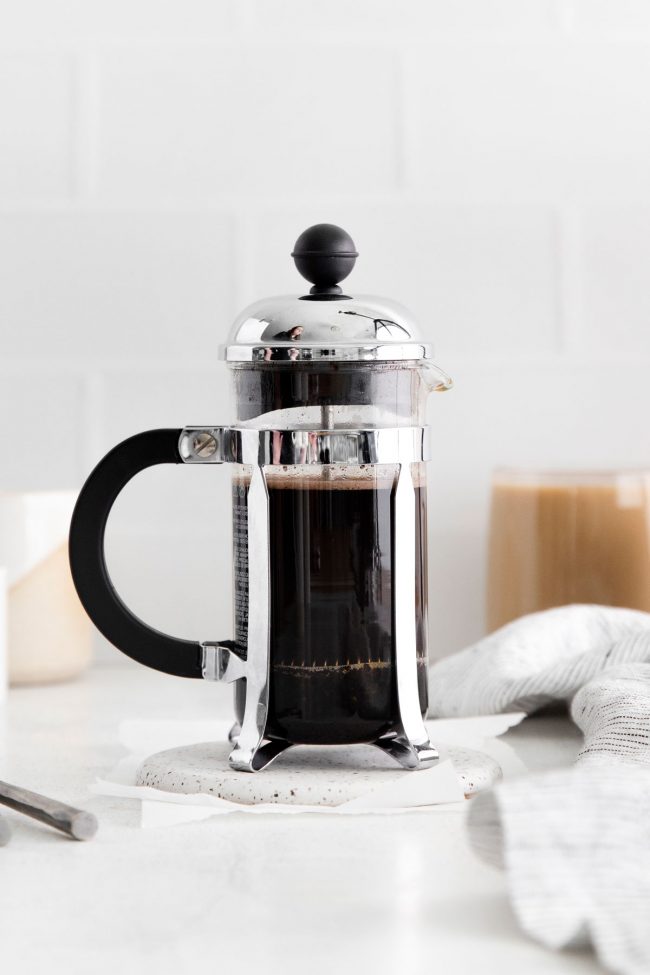
Tips
- You want to buy dark roast coffee beans or espresso beans. Espresso beans are really just dark (sometimes medium) roast coffee beans. Labeling a product as “espresso beans” is a marketing tool to help people know what to buy to make espresso. You can read a lot more here → Espresso Beans vs Coffee Beans.
- The quality and freshness of the beans you use will significantly impact the taste of your French press espresso.
- You don’t want to buy pre-ground espresso, as this will almost certainly be very finely ground, which isn’t the right grind for a French press.
- If the beans are too coarse, you’ll end up with weak espresso. If you grind them too finely, the filter might get stuck and won’t filter out the ground beans properly.
- See the photo below on how coarse the beans should be ground. I did this in the Twister jar of my Blendtec as my coffee grinder doesn’t grind them coarsely enough.
Preheating the French press?
To be honest, I never do this. If you use a glass French press, which I do, you’re supposed to preheat the French press so that the glass doesn’t shatter when you pour in the almost boiling water.
Even if you use a stainless steel French press, you’re supposed to preheat it so that you don’t pour hot water into a cold French press, causing the water to immediately start cooling. You want the French press to stay warm during the whole brewing process.
I tried it out, and I don’t notice any difference in taste, so I don’t do it. And I have yet to shatter the glass, so I don’t bother.
But I don’t want you to break your French press, so if using glass, I’m recommending that you do it. ;)
Does the grind size matter?
Yes, yes it does! For every type of coffee maker, there is a perfect grind.
As mentioned above, pre-ground espresso is usually super fine. That is not what we want to use in the French press.
The perfect grind for the French press is a medium-coarse grind. It will give you a much better flavor profile.
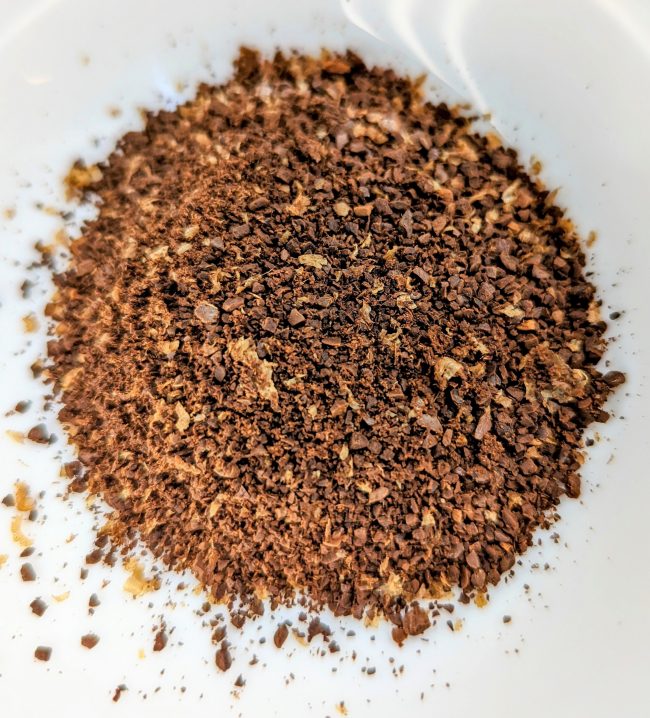
Use a scale!
Don’t use a coffee scoop. Some sources say those are typically 2 tablespoons, and some sources say that they’re actually only 1 tablespoon.
So let’s just avoid the confusion and use a scale. You could also use a regular tablespoon, if you know that your tablespoon is really, truly 1 tablespoon.
I bought a set of tablespoons from Amazon. They were marketed as normal tablespoons for cooking and baking.
When I received them, I saw that they were actually 1.33 tablespoons. Then I took a closer look at the reviews, and people were saying that the tablespoons were more like “coffee tablespoons.” Whatever that means.
10 grams is always 10 grams. There’s no zero for error with a scale!
And if you don’t have one…
The recipe below calls for 7 tablespoons of ground coffee. Medium-coarse ground coffee.
If you have a scale, you can simply grind 39 grams of coffee beans. But if you don’t have one, to get those 7 tablespoons of ground coffee, use 6 tablespoons of whole coffee beans.
I once came across a coffee recipe from a huge blogger, saying that 3/4 cup of coffee beans = 1 1/2 cups of coffee grounds. There are loads of comments arguing that point, but she continues to say that she’s correct. 🤷♀️
Then I read on a coffee blog that ground coffee takes up less volume than whole beans before grinding. Again, I say: 🤷♀️
But on most sites, you’ll see most people saying it’s 1:1. 1 tablespoon of whole coffee beans = 1 tablespoon of ground coffee. I tried it out several times in this recipe and 6 tablespoons of whole coffee beans, ground medium coarse, yielded 7 tablespoons.
Does the temperature of the water matter?
Yes. The temperature of the water can affect the flavor of the coffee in sometimes drastic ways.
For the French press, you want to use hot water instead of lukewarm water, but it shouldn’t be too hot, or you’ll risk burning the coffee.
The best temperature is about 195 °F (91 °C) which is why I recommend bringing it to a boil and letting it rest for one minute if you don’t have the ability to set the desired temperature on your electric kettle (if you have one).
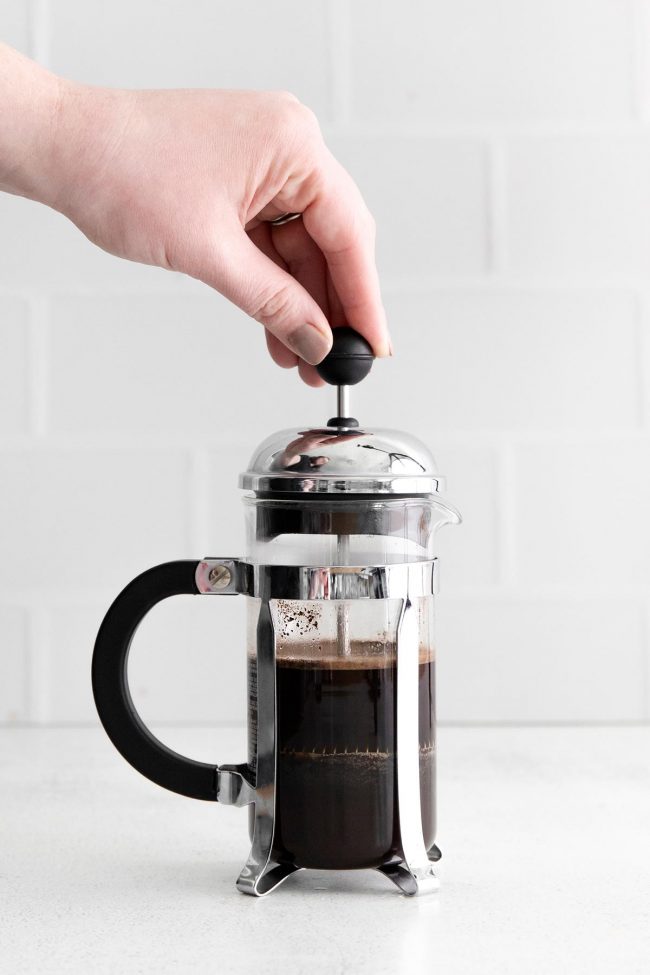
Filtered water?
When I first read I should use filtered water to make coffee, I groaned a bit. I like my tap water. ;)
But there’s a good reason for using filtered water. You really don’t want to mess with the coffee’s flavor by using tap water treated with chlorine, for example. Filtered water is odorless and tasteless which allows the deep coffee flavor to be the star.
Tap water can additionally have particles of dust, sediment and rust. All of that can distract from the true espresso taste.
If your tap water is totally odorless and tasteless, you can likely get away with using that for your coffee. But I’d suggest using filtered water one day and comparing it to your usual tap water coffee!
By the way, if you use a coffee machine on most days, it’s super important to use filtered water. Calcium build-up could shorten the lifespan of your coffee machine.
So using filtered water not only makes the coffee flavor shine, but it keeps your machines in good working order.
While there are numerous considerations in making espresso, like the grind, the roast and the quality of beans, water quality is equally important.
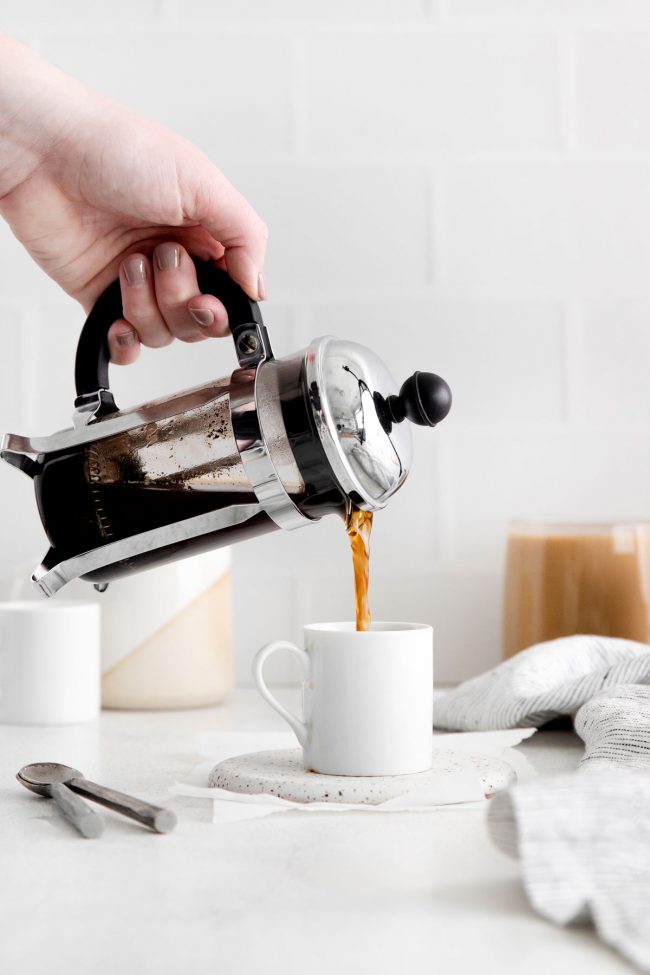
Bitter espresso
If you’ve ever tasted bitter espresso, then you might have been deterred from making it again. Some common mistakes can lead to a bitter brew, namely over-extraction, grind size or dirty equipment.
The longer coffee is exposed to air, the more likely it will become bitter. So drink up and refrigerate it in an airtight container.
Grind size is important, so make sure to use a medium-coarse grind for this recipe.
Also, oils can build up on the mesh piston, and this could affect the taste of the espresso. It’s easy to twist the mesh piston apart and give all the parts a good cleaning.
If it’s bitter, but you need your espresso, you can add a bit of salt, creamer (perhaps some homemade coffee creamer), sugar or a small squeeze of lemon.
What to serve with espresso
To me, the best food to pair with an espresso shot is sweets, of course! Italians will usually have espresso with a sweet pastry for breakfast or a nice cookie in the afternoon. So here are some of my best options.
- These Almond Flour Banana Muffins are a great start to any day. They have a great texture and have a vegan option.
- These Pignoli Cookies are simply elegant and easy to make. There are only 5 ingredients and they’re super quick with a paleo option.
- These Almond Flour Sugar Cookies can be shaped any way you like, so bring out your cookie cutters!
- These Lemon Curd Thumbprint Cookies are perfect for spring. You might think it’s a weird combination with espresso, but actually espresso is sometimes served with a lemon twist!
If you make this espresso, don’t forget to snap a pic and share it with #texanerin so I can be sure to see it! Enjoy. :)
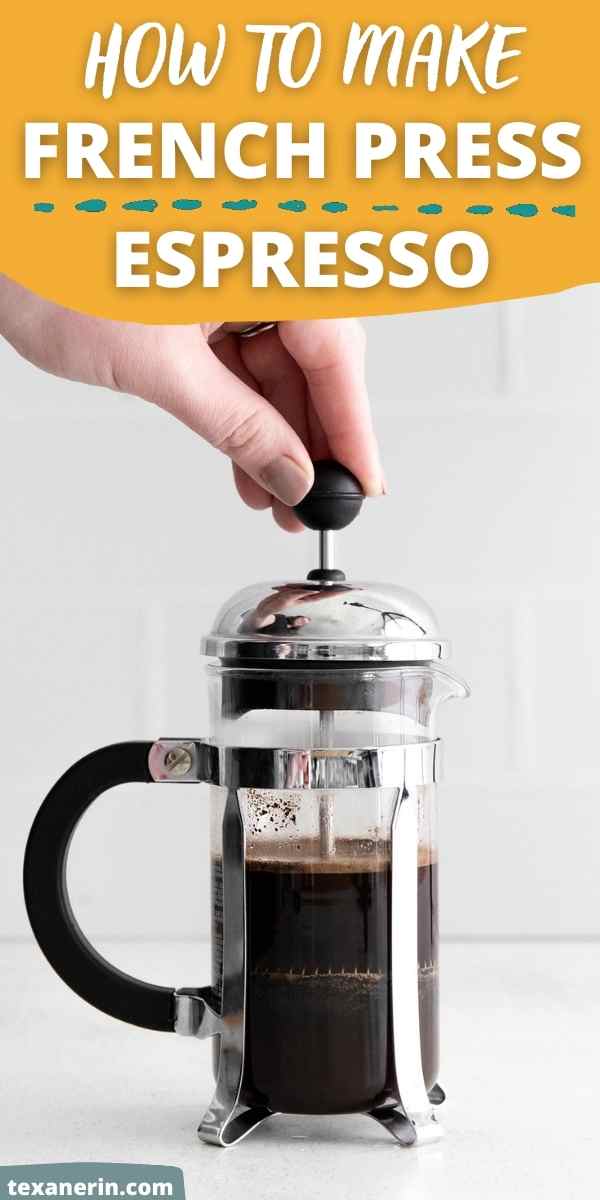
French Press Espresso
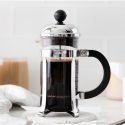
- Prep Time:
- Cook Time:
- Ready in:
- Yield: 2 double shots of espresso
Ingredients
- 1 cup (237 ml) water
- 7 tablespoons (39 grams) medium-coarse ground espresso or dark roast coffee beans1
Directions
- Note: if you have a glass French press and are worried about hot water shattering the glass, you might want to preheat it by filling it with hot (not boiling water). Once the glass is warm, pour the water into glasses to drink later and begin with the recipe below.
- Bring the water to a boil then let it cool for a minute. If you have an electric kettle and you’re able to set the target temperature, set it to 195 °F (91 °C).
- Add the ground coffee beans to the bottom of the French press.
- Pouring in a circular motion, cover the grounds with a little water (about 78 grams or 5 tablespoons). Don't stir.
- Wait 30 seconds to allow the ground coffee to bloom.2
- Add the remaining water and do not stir.
- Put on the plunger, but do not push it down yet.
- Let it steep for 2-4 minutes. Two minutes is good for light roast (which typically isn’t used in espresso) and four is good for dark roast (which is probably what you’re using).
- Slowly press down the plunger, but not all the way down, until you meet resistance from the coffee grounds. You don't want to disturb the coffee grounds by pressing down very hard.
- Pour and enjoy!


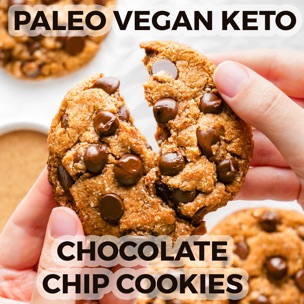
2 comments on “French Press Espresso” — Add one!
4 comments are awaiting moderation!
I love my coffee, and this is just the best way to make espresso. The French press made for such a robustly flavored cup, just how I like it. This was a great way to start the day.
As someone who often struggles with French press (so silly, I know!), I really appreciated the detailed step-by-step approach of this recipe. Thanks for creating it!!!